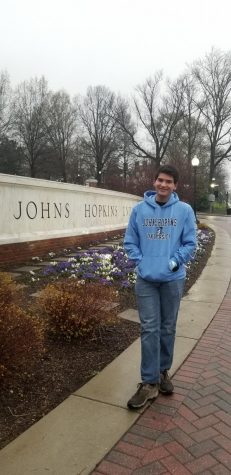Racist events spark community response
December 26, 2018
Despite claims of acceptance and diversity, the North Shore continues to fester racism and hate — something that has become more obvious following the posting of a now-viral video which included Glenbrook North and Glenbrook South students using racial slurs, according to Chicago Tribune.
The video, which was posted to Snapchat on Dec. 9, showed the students shouting slurs directed to a student of color. An investigation is now underway by the Glenview Police Department to determine an appropriate punishment for those responsible. However, as of Dec. 17, officials are not yet certain whether charges will be filed or if the students in the video would face punishment from the schools.
While most are, unfortunately, used to more subtle forms of racism, the video broke the norm through its blatancy and directness. Additionally, the slurs used in the video has more power than many may think due to the history of hate which surrounds them.
“The power of a slur is precisely this,” Northwestern philosophy professor Sanford Goldberg said. “It’s an intimidation tactic because it carries the weight of the entire relevant community. It’s not just a single person making an utterance, it’s signaling there are other people with me who believe that you are degenerate, disgusting, awful, whatever the case may be.”
While this event may be one of the most visible examples of hate in our community, there have been many others, including hate speech at District 65 schools.
“On Friday, Nov. 2, we had an incident where students were treated unkindly and unfairly because of their race and heritage,” Willard Principal Jerry Michel wrote in an email to parents. “Comments such as ‘you don’t belong here’ and ‘your language is terrible’ were made, which is something we take seriously and will not let go unanswered.”
The incident in question involved white fourth-graders who allegedly harassed a Latina fourth grader who is a part of the Two-Way Immersion (TWI) program.
“A girl that was not Mexican, and was not in the TWI program, called out another girl, who was Latina and was a part of the TWI program. She said that she didn’t belong at Willard,” sophomore Eloisa Tirres explained. “They’re so young, and this kind of hate speech has happened to my sister, a fourth grader. This type of thing happened when I was at Willard, and it hasn’t been fixed, which is such a big issue.’’
Tirres believes that the root of hate speech comes from ignorance and “the location of Willard and how it’s predominantly white.”
Because there is no elementary school in the fifth ward, the ward predominantly of residents of color, students from the fifth ward are bussed to other elementary schools, such as Willard — creating a segregated and isolated community for minority students in the school.
“People who live in predominantly white neighborhoods just end up hanging out with kids who look like them, and kids whose background is the same as them,” Tirres said. “You can’t really say Evanston is diverse when that’s happening.”
Hate speech and racist incidents have also taken place at Lincolnwood Elementary School.
“I’ve heard about [hate speech] through things friends have said, through things my kids have said they heard at school, and of course the principal’s communication,” Kerri Simone Adedeji, the mother of two black students, said.
Children as young as eight are already spreading hate towards classmates, and Adedeji offered insight into where their biases come from. In regards to racism and hate speech, Adedeji said, “kids mimic what they see and hear at home.”
Similar events to those at Evanston schools have been reported at other schools in the region, including Oak Park River Forest, where incidents of air dropped swastikas and racial slurs drawn on walls prompted a schoolwide discussion in early November.
The response to the Snapchat video prompted similar discussions around the nature of hate in communities that claim to promote peace. Some of the responses that we have seen are far from constructive — with an escalation of anger and threats towards the students who sent the video rather than discussions about anti-hate.
“The students at our school had a very strong reaction,” GBS senior Nick Depies said. “Many reposted the video on their Snapchats and even shared the addresses of the kids who made the video.”
According to Goldberg, some of the worst response is likely due to virtue signaling, the practice of making yourself look better through the expression of exaggerated beliefs.
“What ends up happening is that whenever someone says ‘the penalty should be x,’ the next will say it should be x+1, then x+2, and then you’re off and running leading to disproportionate punishments for that which occurred,” Goldberg said.
He continues to explain that this is a natural response; however, responding to hate with hate does not bring about peace, nor does it prevent such events from happening again.
“While the video reflects negatively on GBS, I don’t think the people who created the video are the majority,” Depies said. “This was evident in the response to the video leaking. Hopefully, the incident will prompt all people to be more considerate about what they say and do from now on.”
This is particularly important message considering the increasingly common occurrence of hate events and the speed at which many people forget what has happened. FBI data has shown that over the past several years, that despite falls in the overall violent crime rate, the amount of hate crimes continue to increase, with a jump of 17 percent between 2016 and 2017. This is reflected in the increased levels of division between political, religious and racial groups.
“As a nation, we are more easily susceptible to experiencing the ‘hot’ emotions of anger and fury, and much more quick to see ourselves as justified in acting on these emotions, than we used to be,” Goldberg said. “Perhaps because the bonds of sociability — norms of civility, expectations of mutuality and trust — have been eroded [thus leading to an increase in hate].”
While events like these will continue to happen in the future, a reflection on the events that have transpired in the past few months may serve as a guide for how to respond to such incidents.
“There is a place for the phenomenon known as ‘calling out’, and often sharing something can be a place for that,” Goldberg said. “However, the issue is when you get what happened in this case. Because once [something has been shared] with several people you get diminishing returns as other people weigh in on it.”
Additionally, he believes that “people are much more likely to stray towards one extreme or the other rather than finding a balance.”
Even with the traumatic events that have taken place, finding a balance, in both reaction and punishment, is often the only way towards an equitable conclusion when future incidences of hate take place. While response after hate is needed, preventing these cultures of bigotry from developing is the goal that we must strive for.
“From a very young age, we need to introduce the fact that all kids play the same, all kids are the same, and if they can grow up knowing that, it can make a very big difference,” Tirres said.












